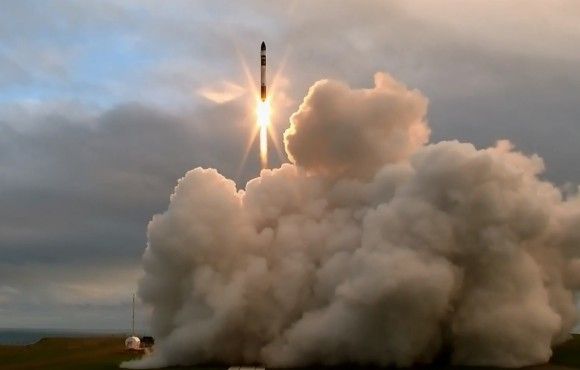2015 – Test year for the Polish Armed Forces Modernization Plan. Important Decisions to be Made
Throughout the last year, the most important modernization programmes which are being carried out by the Polish Armed Forces have not been concluded, even though the plans stated that the agreements related to the medium range anti-aircraft systems and the multi-role helicopter were to be signed in 2014. On the other hand however, in the light of the Ukrainian crisis, increase of the defence spending has been declared, and 2015 is the year when agreements related to Wisła air defence systems or multi-role helicopters are to be concluded.
2014 has been a year, throughout which couple of quite relevant agreements, related to the process of modernization of the Polish Armed Forces, have been signed. We already know that the Air Force will receive the M-346 Master trainer jets and AGM-158A JASSM missiles, along with a modernization bundle for the F-16 fighters. The Army on the other hand is to receive the equipment for the second Naval Missile Squadron, along with ammuntition for the Leopard 2 tanks and the Krab howitzers. Nevertheless, no decisions have been made within the scope of the most significant purchases.
2 competitors in the Wisła Programme, Narew dialogue
MoD made a decision, on 30th June 2014, according to which only 2 contractors are to be competing in the Wisła air-defence programme, namely the Raytheon company with the Patriot system and the Eurosam consortium with the SAMP/T missiles. At the earlier stages offers placed by Rayethon, Polish Defence Holding with MBDA and Thales, MEADS International and finally, the Israeli Sibat government agency, have been taken into account. Agreement is planned to be signed next year, however, initially it had been planned that the Wisła contract would have been concluded in 2014.
2015 will be also the year when a technical dialogue regarding the Narew SHORAD system is to be carried out. 9 subjects have been qualified to take part in this procedure, including the Polska Grupa Zbrojeniowa [Polish Armament Group]. The proceedings related to the “Narew” programme are planned to be started in 2016. The initial variant of the Armed Forces Technical Modernization Plan assumed that the agreement was to be signed in 2014. Next year the Poprad system agreements are to be finalized, and these were initially to be signed in 2013.
Multi Role Helicopters – Plan for the next year. Assault Choppers procurement – accelerated
According to the plans of the Ministry of Defence, the supplier of the assault helicopters is to be selected next year, even though the proceedings were to be completed in 2014. The delay has been caused by requests of two out of three contractors, which have been placed in order to prolong the offer placing deadline. Secondly, more than 800 requests for information regarding the technical conditions of the contract have been placed. And these also had to be addressed.
In the light of the Ukrainian crisis, Polish Ministry of Defence has decided to accelerate the procedures related to procurement of the assault helicopters within the scope of the Kruk (Raven) programme, which means that a technical dialogue is to be started soon. The proceedings aimed at acquisition of the assault helicopters are planned to be started next year indeed and the deliveries are to start at the end of the current decade. Initially the plan had assumed that Mi-24 replacement will not be procured by 2020.
Launch of Ślązak, delays in the submarines programme
Supplier of the new type of submarines for the Polish navy is to be selected next year within the scope of the Orka programme, nevertheless it had been planned that the agreement was to be signed yet in 2013. Polish MoD ultimately made a decision, according to which submarines that would be capable of carrying cruise missiles would be acquired. Way of procurement of the missiles has not yet been defined though. In 2015 deals related to acquisition of Miecznik coastal defence vessels and Czapla patrol minehunters are also to be concluded.
Contract related to procurement of the stealth NSM missiles and equipment for the Naval Missile Squadron has been signed in 2014. Technical launch of the future Ślązak patrol vessel has been concluded, along with processing of the sheets that will be used by the Kormoran II mine-hunter. Both vessels are planned to enter service in 2016 – and this will be a major step in the process of modernization of the Polish Navy, particularly when one takes into account the fact that these ships will be manufactured by the Polish shipyard industry.
New training aircraft and missiles for the F-16 fighters
This year two more relevant contracts have been signed. These are directly related to modernization of the Polish Air Force. At the end of February an agreement related to procurement of 8 M-346 Advanced Jet Trainers has been concluded. Introduction of these is to make training procedures easier to conduct in case of the Polish F-16 pilots.
On 11th December agreement related to purchase of a batch of 40 AGM-158A JASSM stealthy cruise missiles, along with a modernization bundle for the F-16 jet fighters, has been made. The process aiming at acquisition of the air-to-ground missiles, range of which exceeds 300 km, had been started even before the Ukrainian crisis, however the process was sped up in the light of the actions undertaken by the Russian Federation. There are still some questions to be answered: will the Americans agree to sell more JASSM missiles to Poland in the future? Will Poland get an approval to acquire the extended range AGM-158B JASSM-ER variant of the missile?
Land Forces
Throughout the last couple of days the Polish Armament Group undertook a decision to acquire K9 howitzer chassis in South Korea, which, in its basic assumption, is a step which is to put an end to the delays in the Krab artillery system programme. The Polish Army is to receive 120 howitzers of this type, and most of the examples of the chassis are to be manufactured in Poland, as a wide technology transfer is to be carried out. Homar long range (of up to 300 km) rocket artillery system supplier is to be selected next year, implementation of the project has been accelerated due to the Ukrainian crisis.
Problems related to the Leopard 2A4 tanks still remain unsolved, even though the relevant agreements were to be signed back in 2013. According to the plan which outlines the process of technical modernization of the Polish Armed Forces, an offer has been placed on 5th December 2014. However, this offer is still undergoing assessment carried out by the Ordering Party.
Polish Ministry of Defence has purchased sabot anti-tank rounds, which are compatible with both the 2A4, as well as with the 2A5 variant of the Leopard tanks. Supplies of these rounds have been started this year. What is more, high-explosive/fragmentation rounds have been ordered for the Krab howitzers and Leopard tanks as well. Finally, an agreement has been signed, which is to regulate development of the Tytan future soldier system. Related memorandum regulating the deliveries has also been concluded.
„Atmosphere” around the modernization process
In the light of the Ukrainian crisis, the Polish authorities have declared that defence spending is to constitute 2% of GDP, starting from 2016, while payments related to the F-16 fighters are to be realized beyond the scope of the spending which is statutorily defined to be shaped at the level of 1.95% of the Polish gross domestic product. Currently, a bill is being passed, aim of which is to increase the GDP assets up to 2%.
It is yet unknown whether the new regulations will unambiguously define the defence spending at the level which is to be not lower than 2% of GDP achieved during the preceding year. According to the 18th November bill, the indicator is to have an average annual value of 2% throughout the period of 10 years, which, in certain conditions, creates a limit of the maximum defence spending. Financing the defence needs to be properly and effectively regulated by the law, in order to avoid situations in which MoD uses much less than it has at its disposal, in accordance with the requirements which are statutorily defined.
Technical modernization process cannot be considered separately from the geopolitical changes in the region. During the Ukrainian crisis e.g. the Black Eagle exercise took part in Poland. This event has involved the British Army Heavy Battalion Combat Group along with the Polish units equipped with the Leopard 2A4 tanks. The Americans on the other hand, have reinforced the Łask AB by stationing F-16 fighter force there. In both cases, on the side of the Polish forces, to a large extent, units that are using the equipment which has been procured after Poland joined the Atlantic Alliance within the scope of modernization of the Armed Forces, have been involved in the undertaken activities. This is a proof that there is a need to continue and accelerate the real-life actions within that scope, particularly within the scope of the political changes which are detrimental for the status of international security in the direct vicinity of the Polish borders.
What’s next?
The upcoming year is going to be truly a “test period” for the technical modernization plan, which has been created for the time between 2013 and 2022. It will be the last call to make decisions, which will make it possible to begin implementation of the key programmes within the scope of medium range air defences, submarines, coastal defence and patrol vessels, and multi-role helicopters. Otherwise, a danger would occur that the Ministry will not be able to spend all the assets that are planned to be spent. We should remember that the plan covers spending a sum which is higher than PLN 130 billion. So far only a small part of the funds has been put into use. Further delays would make implementation of the plan highly questionable, taking into consideration the fact, that a need would arise to spend a lot of money in a very short period of time.
Another important issue is placed within the process of changes in the environment in which the modernization process is being conducted, not only within the scope of financing the defence programmes, but also within the scope of the way the Polish defence industry is functioning. Implementation of consolidation of the Polish armament industry, creating a consortium which is to provide solutions in the Narew programme by the Polish Armament Group, and finally, undertaking a brave decision on procurement of the Krab howitzer chassis – all that gives us hope that the Polish industry will be able to face the challenge of delivering all the equipment that the Armed Forces would ultimately need. It is a condition which is indispensable in order to maintain and expand the national industrial and defensive potential, expanding the combat capabilities of the Polish Army and improving the status of the Polish economy simultaneously.
The initial assumptions of the Technical Modernization Plan. Including the deadlines for signing the deals, are presented by the materials released by the Polish MoD after the press conference back in December 2012, just after the document has been approved. Link to the document (in Polish).




